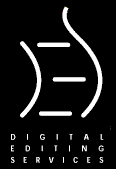|
ANALOG
MASTERING FROM DIGITAL SOURCES - LAYBACK MASTERING & OTHER
MYSTERIES REVEALED!
| |
I
mixed to a digital format, so how does analog mastering
apply to me?
We have had
it drilled into our heads that once a signal is in the
digital domain, it should NEVER be converted back to analog
again except when it is played back - for instance you
would never load a DAT into a workstation using the DAT
machine's analog outputs and the workstation 's analog
inputs, or copy from DAT-to-DAT using analog i/o's etc.
This is very
true if you are using basic analog-to-digital and digital-to-analog
converters such as you would find in DAT machines, CD
players and workstation analog in's and out's. Going back
to analog and then back to digital using converters like
these would result in a loss of clarity, detail, stereo
perspective and depth.
But if mastering-quality
converters are used, like the high resolution 24 bit United
Audio, TC Electronic and Mytek converters in
our rack at Digital Editing Services, and all of
the digital clocking is done properly with a very tight
master clock, the signal can be converted in the mastering
stage back to analog and re-recorded without deterioration,
giving the option of using analog compressors, limiters
and eq's.
Almost all
mastering engineers and producers agree that no digital
processor approaches the sound quality of the best analog
gear, especially tube equipment like the Manley Massive
Passive eq and the TubeTech SMC-2B compressor,
or the solid state Legendary Audio Masterpiece that
D.E.S. features.. The analog gear imparts a warmth
and sweetness to the signal that the digital gear lacks.
This isn't always true however; some material does not
benefit from the analog processing, and some is actually
better if processed digitally, especially if processed
by gear like D.E.S.'s TC Electronic System 6000,
which is a state-of-the-art 48 bit digital mainframe with
the best that digital can offer in terms of multi-band
compression and eq. So whichever path is best for your
material, Digital Editing Services offers the finest
gear available for the job.
|
| |
---
The Magic of "Layback" Mastering ---
For
several years now, the industry's top producers and
mastering engineers have had a secret weapon - not only
is the digital signal converted back to analog in order
to be mastered through analog processors, but in many
cases it is also recorded to a 1/2" analog two-track
machine in order to get the fatness and warmth that
analog tape imparts to the sound. (This is referred
to as "laying back" to two-track.) This can
take the edge and harshness away from all-digital recordings,
and can round the bottom end giving that familiar push
in the low frequencies that is a signature of the analog
sound.
The
favorite machine of mastering engineers and producers
is almost universally the Ampex ATR-102, which
is the machine featured at Digital Editing Services.
Mastering in this manner is more costly, as it takes
more time and the tape costs have to be incurred. But
for the most serious projects, it can be the final step
in achieving the best sound quality that the project
can deliver.
|
| |
What
is it about the two-track that makes the music sound better?
Digital recordings
sound harsh to many people because no matter how loud
the signal gets, digital gives you absolutely flat, accurate
reproduction. Analog tape, on the other hand, "saturates"
as the signal increases in level, which is similar to
compression, and the high frequencies saturate first.
The fact that the highs saturate first means that, as
the signal becomes louder, the highs naturally soften
up a bit, resulting in a less harsh, more pleasing sound.
There is no denying that this is distortion, but it is
distorting the signal in a way that is pleasing to the
ear.
The analog
tape deck will also have a "head bump", which
is a slight rise in the meaty part of the bottom end -
in the 40 to 60 Hz. range - giving that nice roundness
to the bottom end that analog purists love.
Also, the speed
of the machine will have an effect on the sound. 30 i.p.s.
requires no noise reduction and is flatter and more extended
in the high frequencies, and naturally rolls off the very
low frequencies - say below 40Hz. Alternately, 15 i.p.s.
has a softer top end, but a more extended bottom end and
a more pronounced head bump. 15 i.p.s. would normally
be too noisy to use for mastering, but with Dolby SR
noise reduction (which D.E.S.'s machine is equipped
with) it is digital-quiet.
The result
of all of this is that the tape deck can be used to naturally
sculpt the sound before any processing is even applied.
|
| |
|
| |
|
| |
|
| |
|
| |
|
|
